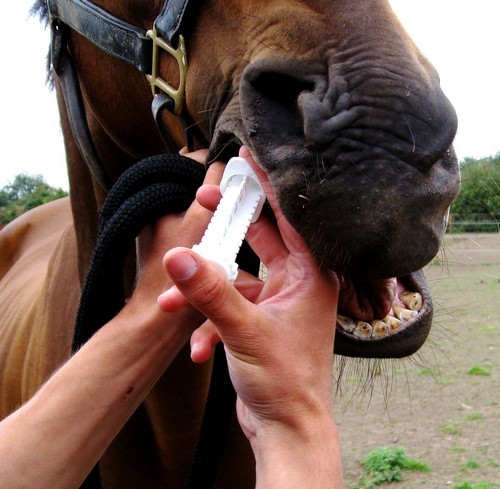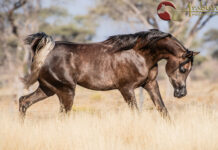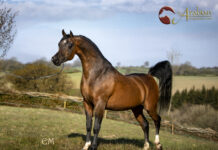How, when and why to worm your horse is one of the questions we are most frequently asked – this is unsurprising due to a shift in attitudes in recent years. This changing strategy to worm control is extremely important to prevent resistance developing to the relatively few worming drugs we have at our disposal.
Intestinal parasites of the horse
Horses often have quite low levels of worms inside their body and these cause no problems at all. However, this does not mean that horses and ponies shouldn’t be ‘wormed’. The main way to check a horse’s worm burden is by examining the faeces or droppings and counting the number of parasite eggs per gram. This is not entirely accurate and only detects certain worms, but is a useful tool to assist with worm control. As the worm burden increases – often with exposure – and exceeds the threshold, the parasites can then cause a problem. The ‘threshold’ is an arbitrary value that causes much debate among vets and experienced parasitologists. There is no agreed level at which worming should be carried out. However, once the faecal worm egg count gets into the 100s, it is often safer to use an anthelmintic (wormer).
Although a well-adapted parasite would not cause any damage to its host, worms can cause severe damage in some cases. Lack of weight-gain is an obvious effect but also general ill-thrift, malaise and depression can occur. Other well-recognised problems with worms include colic and diarrhoea. Death as a result of worm infestation is rare although with huge worm burdens and, particularly in very young horses and foals, this is a risk!
It is true to say that younger horses and foals are more susceptible to worms although there are some older horses that appear to remain very prone to worm infestations and consistently have high faecal egg counts.

Simon with his foal, Jules. “Foals and young horses are more susceptible to worms,” explains Simon. Credit Sweet Photograpy
Worm types
A list of common parasites include:
Small Red Worm: Cyathostomins
Large Red Worm: Strongylus Vulgaris, Strongylus Edentatus
Large Round Worm: Parascaris Equorum
Tapeworm: Anoplocephala Perfoliata, Paranoplocephala Mamillana
Pinworm: Oxyuris Equi
Bots: Gastrophilus Intestinalis
General lifecycle:
- Droppings fall onto pasture
- Horse ingest eggs whilst grazing
- Eggs hatch and develop into adult worms
- Adult eggs shed into horses gut
Repeat ad infinitum.
Small Redworms: Cyathostomins
Cyathostomins are very common and inhabit the lining of the small intestine. Many thousands of larvae can lay dormant here for a long period of time and then erupt at a later date, leading to colic like signs. This can lead to a life threatening condition called cyathostominosis. This is why it is important to worm your horse in the autumn with a suitable wormer to prevent mass larval deposition and subsequent eruption.
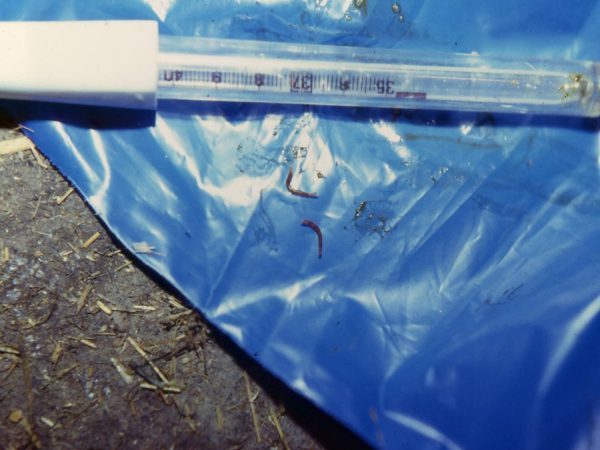
Small redworm – Strongyle.
Large Red Worm: Strongylus Vulgaris, Strongylus Edentatus
Again, horses become infected by ingesting larvae from the pasture. These large red worms migrate to the arteries and veins of the intestinal tract, reside their and then migrate back to the lumen of the intestine.
Large Round Worm: Parascaris Equorum
As a general rule these are more problematic for foals and younger horses. Again, they are ingested from the soil and develop in the walls of the intestine. Larvae migrate to the walls of the intestine and into the veins. Here they are transported to the lungs, coughed up and swallowed and develop further to adults where they are then expelled in the faeces.
Tapeworm: Anoplocephala Perfoliata
Horses become infected with tapeworm by ingesting the Oribatid Mite which is the ‘intermediate host’ of the tape worm. This mite carries the tapeworm ‘eggs’ and inhabits the ground. The Oribatid mite, once ingested, releases the eggs and they develop in the intestine to the adult worm. Tapeworms attach to the junction of the small and large intestine – and area known as the Caecum – via sucker like projections at their head. It is this area that they attach to that can predispose the horse to certain types of colic because as the numbers of tapeworms increase, they can obstruct the flow of food material through the intestine.
Pinworm: Oxyuris Equi
Pinworm can cause intense irritation around the dock or tail head that causes the horse to scratch and traumatise the skin in this region. The mature, adult female worms sit in the rectum around the anus and lay their eggs in a sticky substance on the outside of the anus in the perineal area.
Bots: Gastrophilus Intestinalis
In late summer, the distinctive yellow eggs of the bot fly are deposited onto the horse’s coat in the elbow region and are eaten by the horse when it licks itself often as a result of the irritation. The eggs hatch in the stomach and the larvae attach to the lining of the stomach where they develop before being expelled at some time later in the faeces. Once expelled, they develop into the bot fly and the cycle begins again. When an anthelmintic such as an ivermection is used the bot fly larvae can be seen as 1-2cm long cigar-like structures in the faeces.
PARASITIC DIAGNOSIS AND TESTING
Faecal worm egg count (FWEC)
A small sample of fresh faeces is required and mixed into a solution causing any potential eggs to float. These are then examined and counted under a specialised microscope slide to determine your horses’ burden and whether or not he or she needs a wormer.
Tapeworm
There is a validated ELISA test that requires a blood sample from your horse and measures the levels of antibodies specific to the tapeworm, this corresponds to the burden itself.
More recently an alternative test using a horse’s saliva has been developed. However, the accuracy of this test has not been extensively proven at this point.
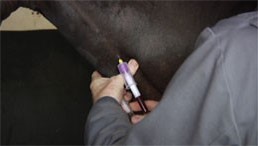
Blood sampling for tapeworm
PARASITE CONTROL
Pasture management
Good pasture management is an essential part of parasite control as it breaks the life cycle of most, if not all, intestinal parasites. This is the cornerstone of all worm control programmes and if used effectively greatly reduces the requirement for wormers. In the near future, there are unlikely to be any new worming products available and in view of the amount of resistance that worms are developing, this is very important.
Effective pasture management involves:
- Low stocking density. Ideally no more than one horse per acre of land.
- High worm burden horses. Not all horses are as sensitive to worms as others. Within a population of horses approximately 20% of horses carry 80% of the worms; these are horses with a high worm burden and they appear to be more prone to worms. They are commonly the younger horses but may also be older or immunosuppressed, such as Cushings. Ideally these ‘high worm burden horses’ would be grazed together with the other ‘low worm burden horses’ in a separate field to reduce the transmission of worms.
- Poo-picking. An apparently thankless task (!) but one that helps to reduce the exposure to worms tremendously. It is thought that poo-picking two-to-three times per week on a regular basis can virtually eliminate a horse’s exposure to worms eggs!
- Grazing with other species such as cattle and sheep. The horse worms are eaten by the other species – thereby removing them from the pasture – although they pass harmlessly through them before the worm larvae die without infesting the horses. Cattle or sheep species of worm can affect horses although these are regarded as relatively benign and are controlled by routine worming of horses.
- Lay pasture. Allowing pasture to remain ungrazed for 12 months may reduce the parasite burden.
- Composting the muck-heap. Correct composting of muck over several months will lead to an internal temperature of over 50° This will kill off any worms or eggs and allow spreading on the land without any risk to grazing horses.
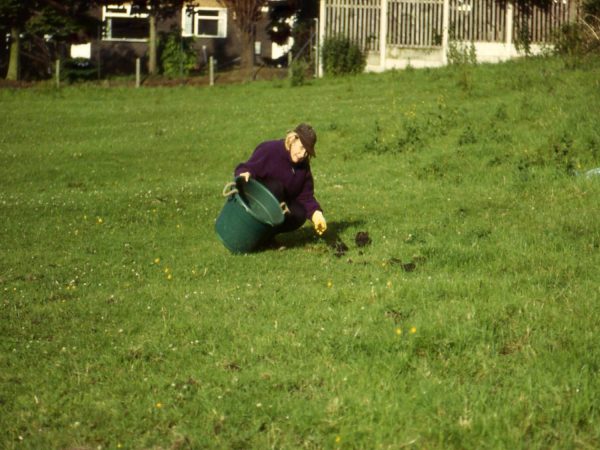
Poo picking
Anthelmintics ‘wormers’
It is a proven fact that in a herd of horses grazing the same allocated area of pasture, 20% of the herd will carry 80% of the worm burden. Therefore, if we can target our use of wormers to that 20% by the using FWEC analysis, we reduce the use of wormers and decrease the build-up of resistance to the few wormers we have.
The use of worming drugs is something to done with care but it is an essential part in the control of parasites in horses.
To find out more about worming, visit Simon’s YouTube channel, Simon Constable Equine Vets
First printed in The Arabian Breeders’ Magazine Volume I Issue 4 June 2017


